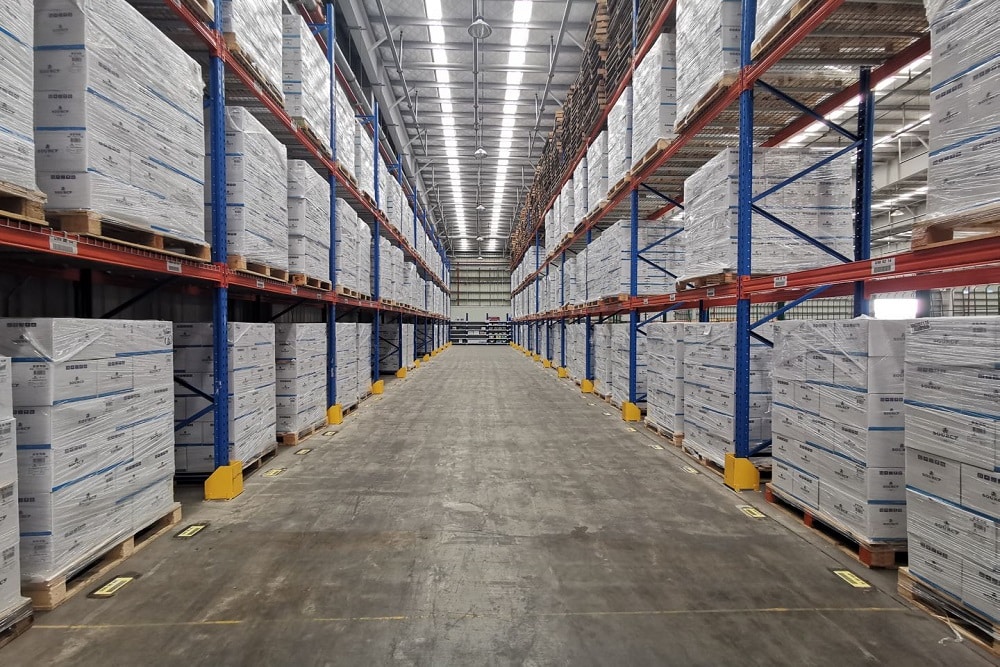Warehousing transport plays a key role in supply chains. The system enables efficient storage of products before consumer delivery occurs. Electronic transportation systems have optimized logistics operations to provide fast, secure distribution services. Companies depend on warehousing transportation to maintain adequate product stockpiling before their items need shipment. Business operations run faster, and tracking systems function better through electronic transportation options.
 Warehousing transportation operates together with electronic transport as a complementary system. Do you know how this benefits businesses? Well, the points below will give a clear explanation of its benefits.
Warehousing transportation operates together with electronic transport as a complementary system. Do you know how this benefits businesses? Well, the points below will give a clear explanation of its benefits.
Benefit #1. Faster Delivery Times:
Warehousing transport reduces shipping delays. Product storage facilities located near customer destinations result in shorter delivery times. Electronic transportation services allow customers to track their shipments in real-time, thus eliminating delivery mistakes.
The combination of warehousing transportation enables businesses to handle their orders rapidly. Well-run warehousing operations enable smooth delivery throughout the final delivery stage. Electronic transportation provides a quicker delivery service by eliminating human mistakes.
Benefit #2. Better Inventory Management:
Warehousing transport simplifies inventory control. Businesses can maintain surplus inventory besides managing their stock inventory levels. The automated system that performs inventory updates through electronic transportation reduces all accidents and mistakes during these procedures.
The use of warehousing transportation prevents inventory outages and excessive stockpiling. Electronic transport systems, through their analytical capabilities, enable sales pattern analysis to predict market demand. Maintaining proper organization of merchandise stocks allows businesses to reduce their expenses from losses.
Benefit #3. Cost Savings on Bulk Storage:
Businesses achieve lower costs through warehousing transportation since they can store products in larger bulk quantities. Bulk purchasing lowers per-unit costs. Electronic transport enables faster movement between warehouses, which results in lower transportation expenses. The combination of warehousing transportation minimizes the obligation to make numerous shipping runs.
Through electronic transportation, business operations achieve better shipment distribution, which helps decrease transportation expenses for fuel and employee costs. Businesses stay protected from last-minute shipping costs through many changes they make in their storage plans.
Benefit #4. Reduced Risk of Damage and Loss:
Through warehousing transportation operations, goods are stored in safe temporary storage areas. Product storage facilities shield goods from theft and environmental attacks. The electronic transportation management system maintains permanent tracking for every shipment during its journey.
Businesses can securely store their fragile products using warehousing transport. The electronic transportation system enables companies to track temperature-sensitive products. The joint operation prevents businesses from sustaining financial losses because of ruined stock.
Benefit #5. Improved Customer Satisfaction:
The combined approach of warehousing transportation enables businesses to fulfill their customer service requirements. Companies can create content clients when they provide more rapid delivery services. Electronic transportation systems allow businesses to track products accurately while providing instant update services.
Through warehousing transport, businesses eliminate both backorders and situations of product unavailability. The delivery status updates through electronic transport channels are executed without interruptions. The quality of service that customers value includes dependability and speed of operation. Thus, this results in improved customer satisfaction.
Benefit #6. Enhanced Supply Chain Efficiency:
The combination of warehousing and transportation operations creates a well-functioning supply chain network. Products are stored according to distribution needs. The optimized system, through electronic transport, finds the best routes for shipments, which results in reduced delivery times.
Warehousing transport provides organizations with management tools to efficiently handle high-demand periods. Electronic transportation automates scheduling, which prevents bottlenecks from occurring. Through warehousing transport, businesses maintain the standing readiness of their products for shipping operations.
Benefit #7. Greater Flexibility in Operations:
The practice of warehousing transport allows businesses to adapt their operations when customer demands vary. The capacity of business storage grows alongside changes in customer sales patterns. The electronic transport system enables businesses to make expedited changes to their delivery path choices.
By implementing warehousing transportation, companies can maintain product inventory throughout peak periods. Electronic transport systems allow businesses to react quickly to any unforecasted delays. The combination of warehousing and electronic transportation supports companies in their adaptation to evolving market requirements.
Benefit #8. Easier Returns and Reverse Logistics:
Through warehousing transportation systems, businesses can efficiently handle product returns. Rapid return handling speeds up the delivery process for customers. The tracking system provided by electronic transport makes it easy to control return shipment movements.
The storage system of warehousing transport properly contains defective products under safe conditions. Electronic transportation systems deliver vital information about what products customers deliver back to businesses. Together, they improve return management. The warehousing transportation system enables fast return item restocking.
Wrapping Up!
A strong delivery system emerges from the combination of warehousing transport and electronic transportation systems. These practices boost operational efficiency. At the same time, they decrease expenses and enhance how satisfied customers feel. The combination of warehousing transportation provides product availability, while electronic transport accelerates delivery times.
Better inventory control, together with reduced risks and increased flexibility, are the advantages that businesses gain through these practices. The combination of warehousing with electronic transportation systems enables modern logistics to achieve success. Get in touch with MOOV for the best warehousing transport services!

 简体中文
简体中文 Nederlands
Nederlands